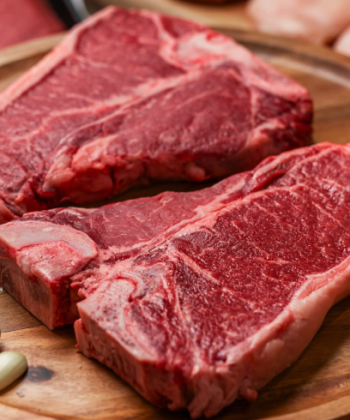When disaster strikes, your pantry could be your best ally. Emergencies come in all shapes and sizes, and while nobody likes to think about them, being prepared is one way to feel confident no matter what life throws at you. Food preservation isn’t just a survival tactic—it’s a practical and effective way to protect your family’s well-being during unexpected situations. But how exactly does preserving food help you get ready for emergencies? Here are five ways that food preservation can make all the difference.
Freeze Drying Snacks
If you’re looking for a food preservation method that combines longevity with versatility, check out freeze drying. By removing moisture from food while preserving its nutrients and flavors, freeze drying turns everyday meals into long-lasting staples. Whether it’s fruits, vegetables, or entire meals, this method ensures that food retains its original taste and nutritional value for years.
One growing trend here is freeze dried snacks, which offer an easy way to store lightweight, healthy options that don’t require refrigeration. These snacks are perfect for emergencies, as they are ready to eat and require no complicated preparation. Imagine being able to enjoy a handful of crunchy apples or strawberries when fresh produce isn’t available. Freeze drying doesn’t just preserve food—it preserves peace of mind, knowing that your family has healthy options even in challenging times.
Emergency Food Kits
When it comes to preparing for emergencies, having a one year food supply can feel like hitting the jackpot of readiness. These comprehensive kits are designed to take the guesswork out of emergency preparation, providing a well-rounded mix of essential nutrients to sustain you through extended periods of uncertainty.
The beauty of emergency food kits lies in their convenience. Packed with shelf-stable meals that require minimal effort to prepare, these kits are a reliable option for anyone serious about long-term planning. They’re also crafted with balance in mind, offering enough calories and variety to keep your body fueled and your spirits high. Whether it’s a natural disaster, an extended power outage, or a supply chain disruption, a one-year food supply ensures that you’re never scrambling to find a meal.
Canning Offers Modern-Day Benefits
Canning might seem like a throwback to a simpler time, but its value in emergency preparedness remains unmatched. By preserving fruits, vegetables, and even proteins in sealed jars, canning locks in freshness and extends the shelf life of seasonal foods. This method doesn’t just save food from going to waste—it creates a stockpile of meals that are ready whenever you need them.
The real beauty of canning is its flexibility. You can preserve your favorite recipes, tailor flavors to your liking, and even experiment with combinations you won’t find in stores. During emergencies, canned goods offer not only sustenance but also a comforting sense of normalcy. There’s something reassuring about cracking open a jar of homemade tomato sauce or peach preserves, knowing that you had the foresight to prepare for life’s unexpected challenges.
Dehydration for Lightweight Food That Packs a Nutritional Punch
Dehydration is another powerhouse in the world of food preservation, transforming fresh foods into lightweight, nutrient-dense staples that can last for years. From dried fruits and vegetables to tasty meat jerky and even herbs, dehydrated foods are compact, easy to store, and versatile in an emergency.
What makes dehydration so effective is the way it concentrates nutrients. By removing water content, you’re left with food that’s high in vitamins, minerals, and flavor. This makes dehydrated options ideal for scenarios where space is limited, such as emergency kits or bug-out bags. Plus, they can be rehydrated and incorporated into meals or eaten as-is for a quick energy boost. Dehydration isn’t just about storing food—it’s about creating options that adapt to your needs when it matters most.
Fermentation is a Flavorful Way to Preserve Nutrients
Fermentation isn’t just a trendy way to make your own kombucha—it’s one of the oldest and most reliable methods of food preservation. By encouraging the growth of beneficial bacteria, fermentation helps extend the shelf life of vegetables, dairy, and grains and also enhances their nutritional content.
During emergencies, fermented foods bring an added layer of health benefits to your diet. They’re rich in probiotics, which support gut health and digestion, both of which are critical when your diet might otherwise lack fresh produce. Foods like sauerkraut, kimchi, and yogurt are excellent examples of preserved items that pack a punch. They’re easy to make, easy to store, and serve as a reminder that emergency preparedness can still taste amazing.


